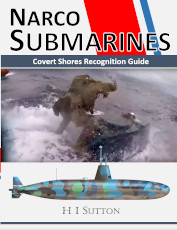10-Times-Navies-Have-Deliberately-Misdescribed-Warships

Chinese Navy (PLAN) Type-055 Renhai Class ‘destroyer’ (read: Cruiser)
10 Times Navies Have Deliberately Misdescribed A Warship
The recent passage of three Chinese warships northward through the Tsushima Strait toward the Sea of Japan highlights something. They are described as two destroyers and a frigate. Except one of them, the Type-055 Renhai Class ship Nanchang, is better described as a cruiser. Navies do this quite frequently, describe ships as one thing when they ought to be another. And the reasons are many.
This article cherry picks 10 interesting examples which illustrate this.
Navies are entitled to call a warship whatever they want. But if they deliberately use terms which muddy the water, that’s what this is about. I’ve tried to stick to examples which were (or ought to be) thought odd at the time they operated.
Ship designations can also be about the role that they perform. But size matters too. By convention, destroyers are larger than frigates and smaller than cruisers. It’s imperfect, but it rings true. And navies abuse this, using names to imply that a ship is either larger (by inference more powerful) or smaller (by inference cheaper) than they are. Calling a corvette a destroyer, or an aircraft carrier a cruiser.
1. Type-055 Renhai Class
Country: China
Described as: Destroyer, or Large Destroyer
Sensible description: Cruiser
Reason: Possibly to appear less aggressive on the world stage
The People’s Liberation Army Navy (PLAN) has only recently built warships large enough, and capable enough, to fit the Cruiser classification. As Twitter user @ArmouredCarrier recently observed:
This is why the naval classification system is broken. Here is the Type 055 Renhai Class “destroyer”. It’s about 13,000 tons. It has 112 VLS cells. Australia’s 7000ton Hobart Class “destroyer” has 48. Same league? I think not…
They are described in Chinese sources merely as “destroyers”. This may be part of a wider desire to not appear too warlike or assertive on the international stage. Despite this being part of a wider move to create a blue-water navy with global reach, China casts itself as a defensive power only concerned in its local affairs. Possibly building cruisers might be seen as undermining this.
2. NR-1
Country: United States
Described as: Scientific research, oceanography and later deep sea rescue research
Sensible description: Spy submarine
Reason: To deceive adversaries. Also for budget and fleet size bureaucratic reasons
A special mission spy submarine, she was built under the guise of research, oceanography and later deep sea rescue. Obviously the U.S. Navy did not want adverseries to know about the unique capabilities of this tiny submarine. It was designed to dive extremely deep and manipulate objects (sonar arrays, communications etc) on the sea floor.

But there were other reasons for obfuscation too. The man behind it, Admiral Hyman G. Rickover, did not want this pet project to count towards the total number of nuclear submarines. And he needed to find creative wats to fund this extremely expensive project. So it was described as having something to do with deep sea rescue, a popular topic at the time. Connected to these games, NR-1 was never commissioned into the US Navy, which is why it isn’t called the USS NR-1.
Get The essential guide to World Submarines
This Covert Shores Recognition Guide Covers over 80 classes of submarines including all types currently in service with World Navies.
Check it out on Amazon
3. USS Halibut’s diver’s chamber
Country: United States
Described as: a Deep Sea Rescue Vehicle simulator
Sensible description: A special chamber for saturation divers involved in spy submarine missions
Reason: To deceive adversaries.
In a class Cold War ruse, the US Navy painted “U.S. Navy DSRV Simulator” on the side of a special diver’s chamber. DSRV stands for Deep Submergence Rescue Vehicle, a small minisub which can dive down to a sunken submarine and rescue the crew. What it really was, the living quarters for the divers who would conduct the covert missions in the Soviets back yard. They were diving at great depths so they did something called saturation diving. In effect this means keeping the body under great pressure for days at a time rather than repeatedly decompressing. This minimizes the risk of decompression sickness (“the bends”) .
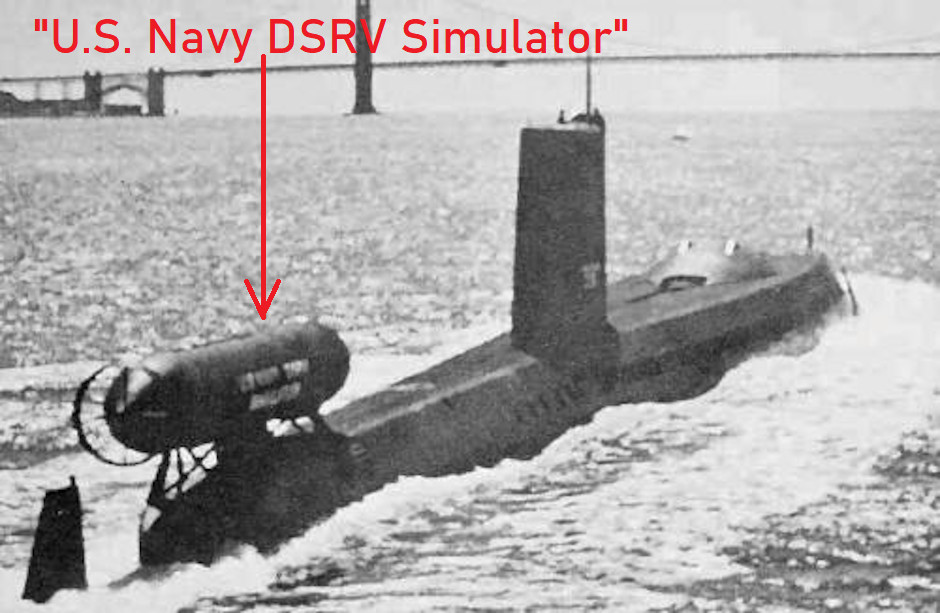
The USS Halibut is most famous for performing the first wire-tap on the Soviet military’s undersea communication cables. The missions, in the Sea of Okhotsk, started in 1970 and were known as IVY BELLS.
4. Mowj Class
Country: Iran
Described as: Destroyer
Sensible description: Light frigate or corvette
Reason: Propaganda
Iran has a habit of bigging-up its indigenous warships. This 1,500 ton warship, is much smaller and less capable than what over countries would call a destroyer.
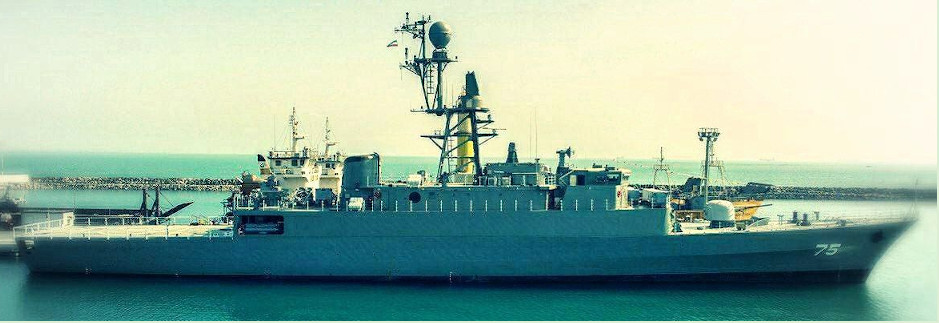
There may be some doctrinal reasons for this, but mostly it seems it is to impress the crowds.
5. Invincible Class
Country: United Kingdom
Described as: Through-deck cruiser
Sensible description: Light aircraft carrier
Reason: Internal politics
The Invincible class are famous for the lead ship’s role in the Falklands Conflict (read ‘war’) of 1982. But while everyone in the world sees them as a smallish aircraft carrier, officially they were through-deck cruisers. Whatever that means?
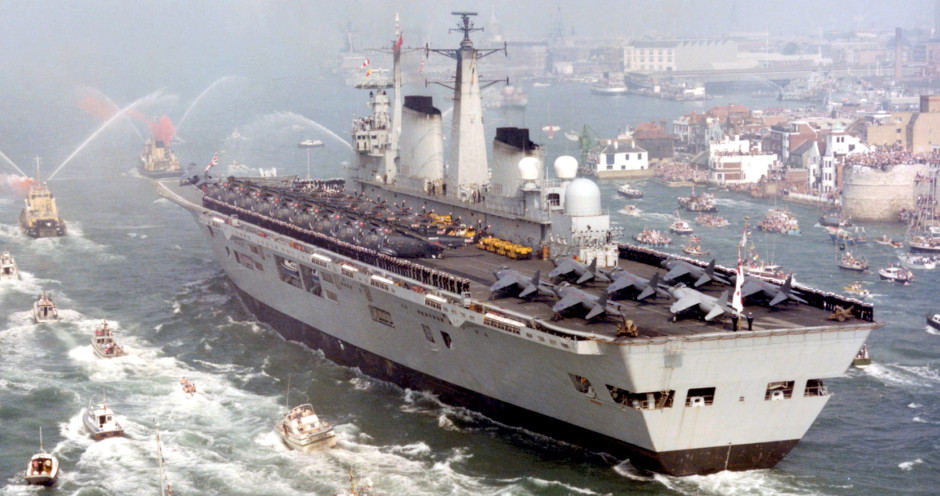
The Royal Navy’s last large aircraft carriers had just been cut and the replacement CVA-01 program cancelled. In those penny pinching times (some things don’t change) it was seen as extravagant and politically risky to be seen to be building an aircraft carrier. So they called them cruisers.
THE book on Special Forces subs Covert Shores 2nd Edition. A world history of naval Special Forces, their missions and their specialist vehicles. SEALs, SBS, COMSUBIN, Sh-13, Spetsnaz, Kampfschwimmers, Commando Hubert, 4RR and many more.
Check it out on Amazon
6. Broadsword Class
Country: United Kingdom
Described as: Frigate
Sensible description: Destroyer
Reason: Internal politics
Following on from the Invincible Class example, the Royal Navy did it again with the Type-22 destroyer. Despite being 4,500 tons it was called a ‘frigate’, which sounds less extravagant.
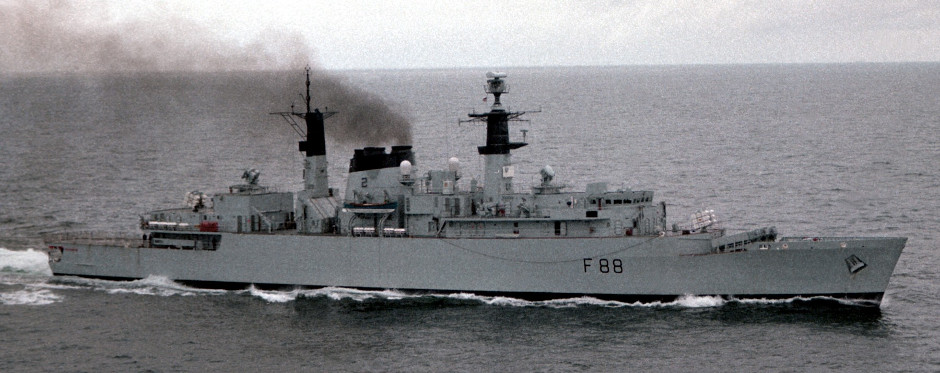
7. Izumo Class
Country: Japan
Described as: multi-purpose destroyer
Sensible description: Light aircraft carrier
Reason: Internal and external politics
Like the Royal Navy’s Invincible Class of the 1970s, the latest Japanese Navy (JMSDF) carrier is not described as such. That might appear too aggressive, or remind people of the Japanese carriers of yesteryear.

The 27,000 ton ships (by far and away the largest ‘destroyers’ in the world), are being fitted for F-35B jet fighters.
The defensive wording is particularly relevant in the context of Article 9 of the Japanese Constitution, crafted after World War Two. It reads “the Japanese people forever renounce war as a sovereign right of the nation and the threat or use of force as a means of settling international disputes. … land, sea and air forces, as well as other war potential, will never be maintained.”.
8. Kuznetsov Class
Country: Russia (USSR)
Described as: Aircraft carrying cruiser
Sensible description: Aircraft carrier
Reason: Partly doctrinal, partly to get around a treaty
At 65,000 tons, Russia’s Kuznetsov Class looks like a typical aircraft carrier. But the Soviet Navy was shy of this term.
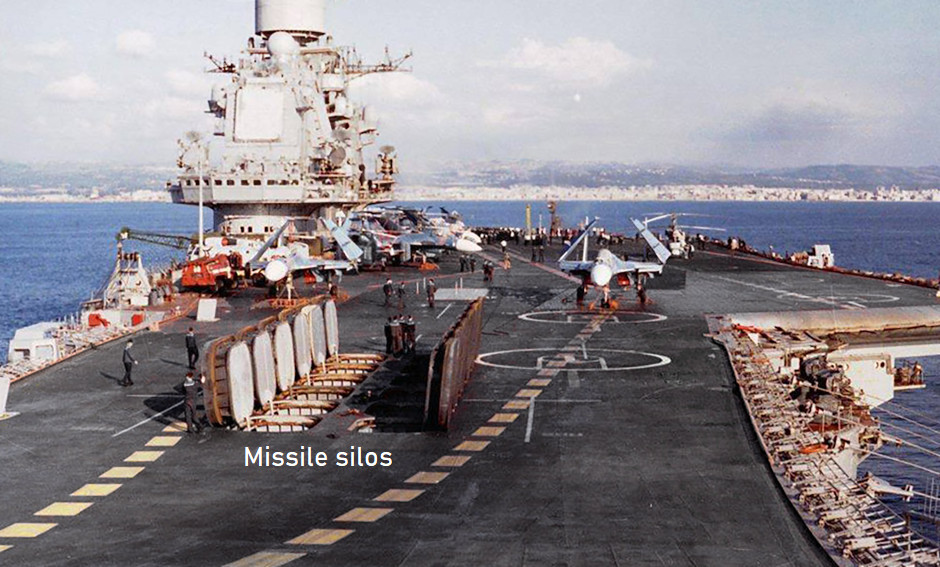
Partly this was because the Russian doctrine was different. The ships (only one entered service with Russia) were not only armed with aircraft. They were armed with 12 x P-700 Granit missiles. These could be viewed as the primary offensive punch with the Sukhoi Su-33 FLANKER-D fighter jets principally for defense. But there was likely another reason too. Under the terms of the Montreux Convention Aircraft carriers cannot pass through the narrow waterway between the Mediterranean and the Black Sea. Calling them cruisers may get around this.
The World’s ONLY Guide to
Narco Submarines
10 years of research, analyzing over 160 incidents, condensed into a handy guide. This unique book systematically breaks down the types and families. With detailed taxonomy, recognition 3-views, profiles and photos. Available on Amazon
9. Chitose Class
Country: Japan
Described as: Seaplane tender
Sensible description: Midget submarine mothership
Reason: To deceive adversaries.
In the lead-up to World War Two the Imperial Japanese Navy developed unique high-performance midgets submarines. The Type-A Ko Hyoteki was considered a secret weapon, so the purpose of their mother ships had to be hidden. The 11,023 ton ships could each carry 12 Ko Hyoteki.

They were designed to sail as part of the battle fleet. Once they were within striking distance of the enemy fleet they would launch the midget submarines. In the event the midget submarines were carried into battle on larger submarines, and used for sneak attacks on enemies in port.
10. Yantar
Country: Russia
Described as: Research Vessel
Sensible description: Spy ship
Reason: To deceive adversaries, or at least offer some plausible deniability
The Russian Navy’s Project 22010 mini-sub host ship Yantar is known for loitering near undersea internet cables (known as Submarine communications Cables - SCC). Yantar is operated by Russia’s secretive Main Directorate of Underwater Research (GUGI) who operate many of Russia’s special mission (spy) submarines.
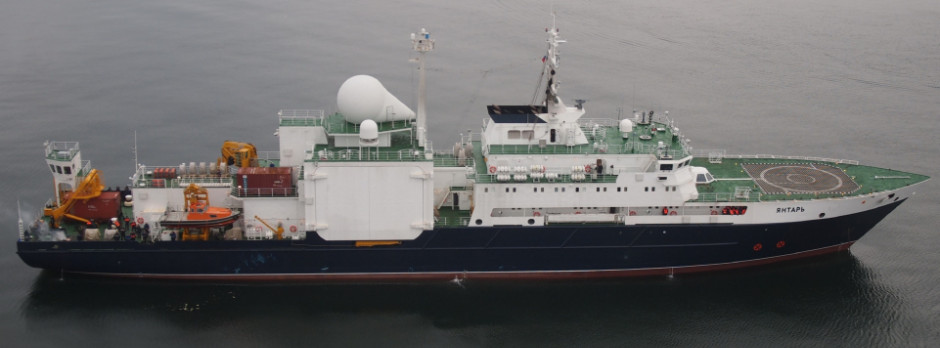
Naturally the Russian Government does not describe her as a spy ship. But I do.
Related articles (Full index of popular Covert Shores articles)

 Japanese Ko-Hyoteki midget submarine of WW2 - Pearl Harbor attack
Japanese Ko-Hyoteki midget submarine of WW2 - Pearl Harbor attack

 USS Halibut. w/Cutaway
USS Halibut. w/Cutaway

 Yantar spy ship loitering over undersea cables
Yantar spy ship loitering over undersea cables





